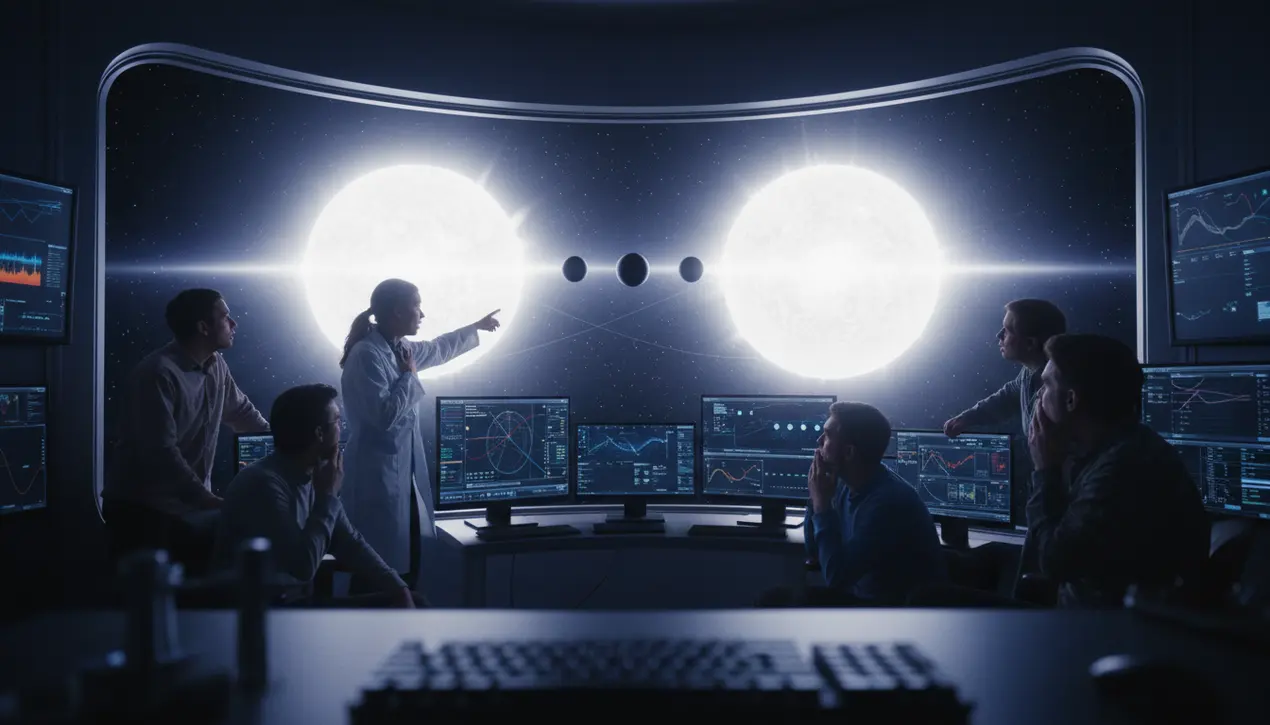
Sciencespace & astronomyExoplanets and Habitable Worlds
Astronomers stunned by three Earth-sized planets orbiting two suns
TH
Thomas Green
3 hours ago7 min read2 comments
In a discovery that feels ripped from the pages of science fiction, astronomers have just confirmed the existence of three Earth-sized planets locked in a delicate dance around two stars in the TOI-2267 system, a celestial arrangement that fundamentally challenges our understanding of how planets are born. This isn't just another exoplanet catalog entry; it's a cosmic first.For the first time ever, scientists have observed planets transiting—passing in front of—both of their parent stars, a rare geometric alignment that provides an unprecedented level of detail about this bizarre stellar neighborhood. The system is remarkably compact and cold, a configuration that existing planetary formation theories, which were largely built around single stars like our Sun, struggle to explain.It’s as if we found a perfectly formed snowball orbiting a double bonfire at a distance where it should have instantly vaporized. The conventional wisdom suggested that the gravitational turbulence and intense radiation from two stars would tear apart any nascent planetary material before it could coalesce into stable, Earth-sized worlds, yet here they are, defying the models.This discovery, made possible by data from telescopes like TESS, opens up a new frontier in the search for habitable worlds, forcing a complete rewrite of the rulebook on cosmic architecture. The next step is even more thrilling: the James Webb Space Telescope (JWST) is poised to turn its golden eye toward TOI-2267, where its powerful spectrographs will attempt to sniff out the atmospheric composition of these planets.Are they barren, rock-strewn landscapes, or could they possess hazy, Venus-like shrouds or even tenuous envelopes of gas? The answers lie in the starlight filtering through their skies. This system is now a prime laboratory for studying the resilience of planetary formation, offering clues about how common such 'Tatooine-like' worlds might be in our galaxy. It’s a humbling reminder that the universe is far more inventive than our textbooks, constantly presenting us with puzzles that push the boundaries of human curiosity and our quest to understand our place in the cosmos.
#featured
#TOI-2267
#circumbinary planets
#Earth-sized planets
#planetary formation
#James Webb Telescope
#astronomy discovery
Stay Informed. Act Smarter.
Get weekly highlights, major headlines, and expert insights — then put your knowledge to work in our live prediction markets.
Related News
Comments
Loading comments...
© 2025 Outpoll Service LTD. All rights reserved.
